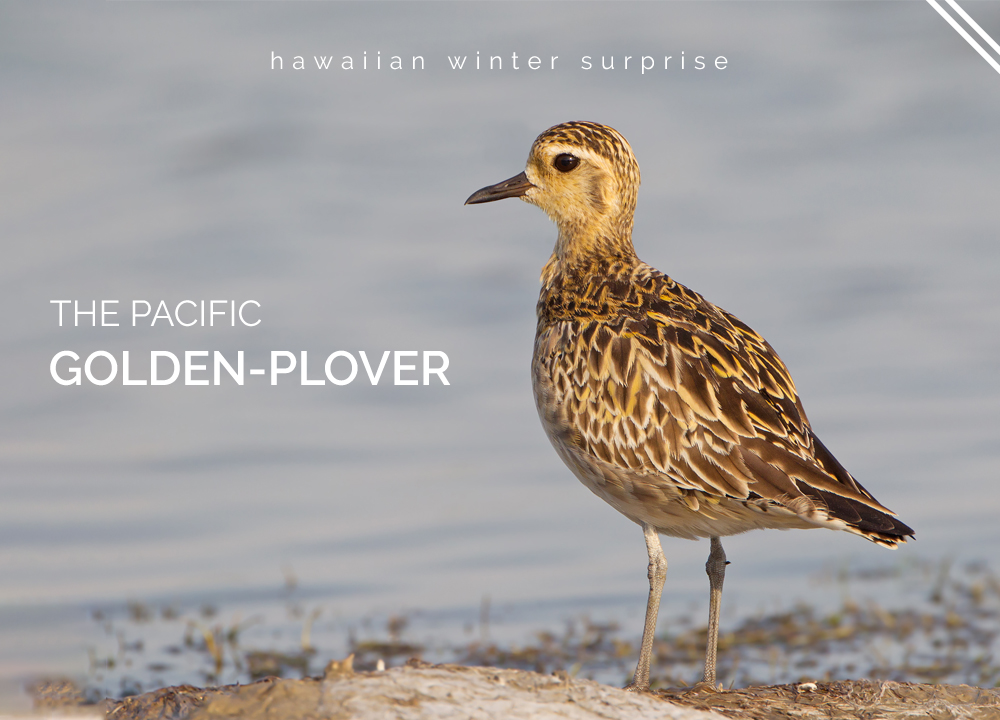The Pacific Golden Plover- A Delightful Native Hawaiian Bird
30th Aug 2019

The mild weather, amazing beauty of nature, the great number of things to do, and friendliness of the people, make the Hawaiian Islands a fantastic destination for all kinds of people. All islands are a delight for curious travelers who can’t wait to discover the interesting Hawaiian culture and heritage, relax on sunny beaches, indulge in culinary andlocal shopping experiences, as well as enjoy adventurous or unwinding outdoor activities.
If water sports and hiking are your cups of tea, pack your special gear and get ready for unforgettable moments. In case you are not looking for an adrenaline rush, but for more peaceful encounters with nature, Hawaii won’t let you down. Walking easy and flat trails, as well as birdwatching, are things you can do to relax and get closer to the soul of the islands. With winter right around the corner, a visit to Hawaii will also bring you the chance to meet one of its charming native birds, the Pacific Golden Plover.
The return of the Kolea- A birdwatcher’s delight
Wildlife lovers and birdwatching enthusiasts who plan to visit Hawaii soon should get ready for a pleasant surprise given by the return of the Pacific Golden-Plover, also known as Kolea.
This intriguing, strongly migratory native Hawaiian bird is returning to Hawaii for the winter. The birds are expected to arrive in August-September and indulge people with their presence until the end of April. Then, after gathering at traditional flocking sites, they will migrate to their breeding grounds in the arctic.
An interesting fact about the Kolea birds is that they have an 80% fidelity rate, and, in Hawaii, they will come to the same areas they used to live before their previous migration.
Want to spot this charming bird? Here is what you need to know!
Whether you visit Hawaii, you are based in California or traveling across southern Asia and Australasia you will be able to admire the Kolea during the winter months. When it’s their breeding season, the birds can be found in the arctic tundra, from western Alaska to northern Asia.
To be ready for a successful birdwatching session, you should know a bit about the Pacific Golden-Plover’s appearance. An interesting aspect is that it looks different during winter than it does when it’s time for breeding. While in Hawaii, look for a lovely bird with a yellow body speckled with a bit of brown, that has yellowish to white underparts. These characteristics change as spring nears when the speckling becomes greater with additional white areas, and it begins having a black face, wingtips and underside. Their speckled and black areas are separated by white barring.
A Few Fun Facts to Satisfy Every Wildlife Enthusiast
As mentioned above, Kolea is known for its high fidelity. The bird returns to its previous nesting sites and have small ‘cups’ scooped out of the earth as nests. The young ones can run soon after hatching, and they grow rapidly. Even if they breed during June and July, in mid-August, the little ones migrate south with the adults.
Not only are they known for their fidelity, but the Kolea are also fiercely territorial. For instance, upon returning to their Hawaiian territories, they sometimes chase off the other birds, even the larger Myna. They do, however, tolerate other birds’ presence after feeding and regaining their strength.
Another interesting fact about Pacific Golden-Plover is its intelligence. For example, in the case of a threat, the parent pretends to have a broken wing, to make the predator lose interest in the nest or chick.
If you are curious about these interesting creatures, when visiting Hawaii, indulge in a bird-watching session. And, in case you are not able to plan a trip right now, but you want to feel closer to the heart of these beautiful lands, offer yourself something local, that promises to bring the Hawaiian spirit wherever you are. A pair of authentic, hand-crafted Island Slippersmight be exactly what you need to have a comfortable walking experience, like you would on Hawaii’s soft, sandy beaches.
